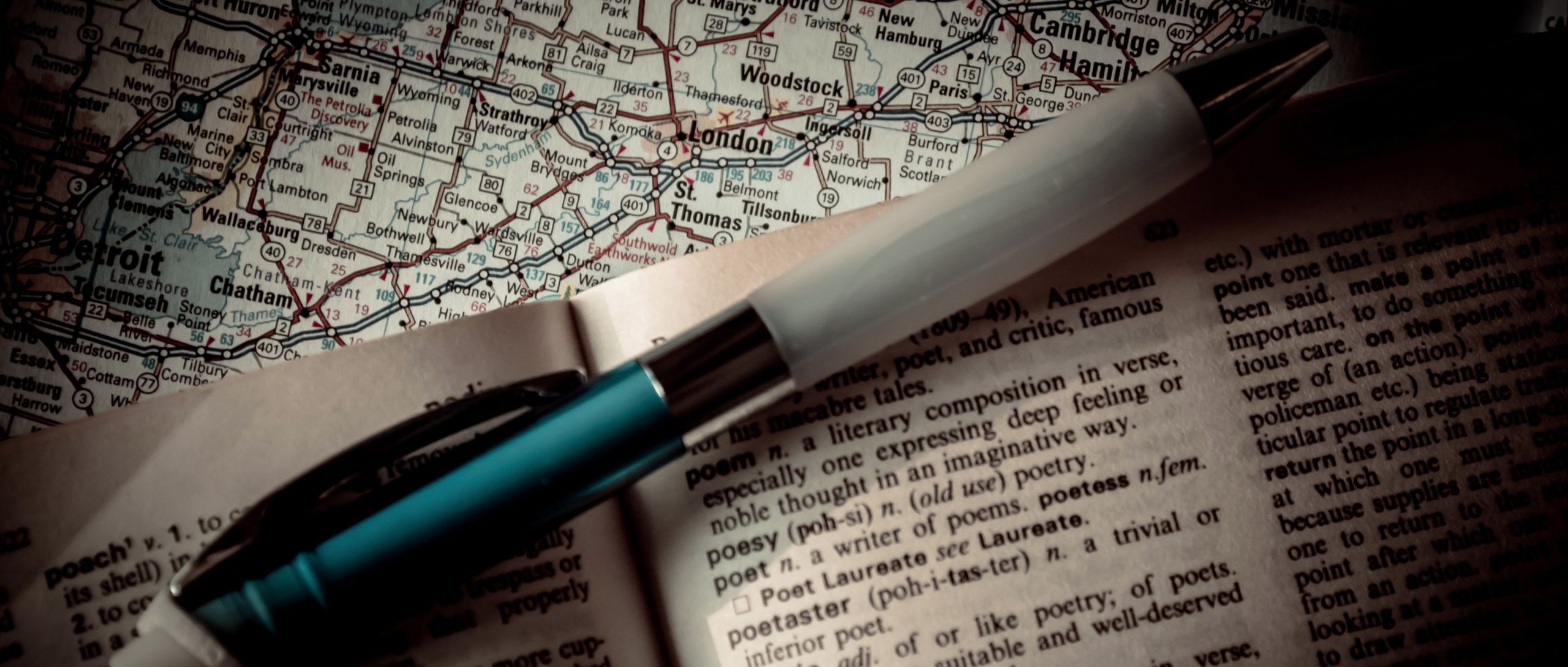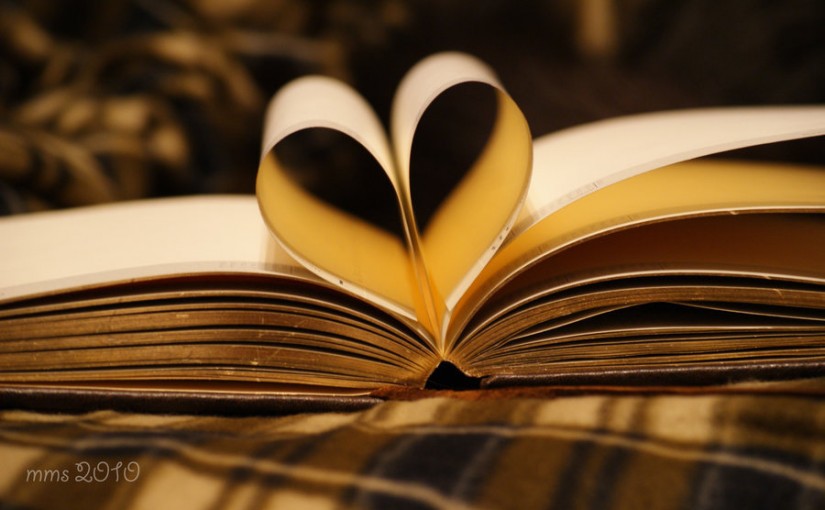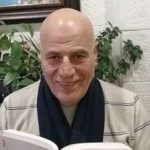
 Contrary to the notion that scientific language can only be used for purely scientific purposes, these poets have adapted it to their poetry.
Contrary to the notion that scientific language can only be used for purely scientific purposes, these poets have adapted it to their poetry.
One thing is certainly not true: that the scientists have some greater insight into the workings of nature than poets.
Both [Science and poetry] at their best, use metaphor and narrative to make unexpected connections.
By Nizar Sartawi
Introduction
Poetry is poetry, and science is science, and never the twain shall meet. * This notion – that poetry and science are mutually exclusive – has been widely accepted without question by the majority of critics, linguists, poets, scientists, and probably most people interested in these two major fields. Apparently, few people would believe that the language of science could be used for poetry or vice versa. I. A. Richards (1893 – 1979), one of the most prominent critics of the twentieth century, elaborated on the subject in his renowned book, Principles of Literary Criticism (published in 1924). Discussing the theory of language, Richards distinguished between two uses of language: the scientific use and the emotive use. When used for scientific activities, he expounded, language is factual; it requires accurate, undistorted references: there is no room for fiction. On the other hand, when language is used for emotive purposes, it does not require truth, clarity, or logical consequence. Attitudes are interconnected emotionally, without necessarily being based on logical relations or facts.
At its most extreme manifestation, the difference between poetry and science, has only divided the disciplines, but not the disciples. Notwithstanding their loyalty to the muses, a great number of poets throughout history have been eminent scientists. For instance, the Greek poet Eratosthenes of the third century BC was a mathematician, geographer, astronomer, and music theorist; the eleventh century Persian poet Omar Khayyam was a polymath, mathematician, philosopher, and astronomer; and the twelfth century Andalusian poet Ibn Jubayr was a geographer and traveler.
In modern times, a few scientists have become celebrated poets either locally or internationally, and most often their scientific career has been eclipsed by their poetic achievement. For example, the two Egyptian poets, Ahmed Zaki Abu Shadi and Ibrahim Nagy, who both died in the 1950s, were physicians, but in people’s minds they were and still are associated with the Romantic Movement in modern Arabic poetry. Likewise, the Chilean Nicanor Parra is celebrated in Latin America as an influential poet, not as a mathematician and physicist.
The division among the majority of these scientist-poets, or poet-scientists, basically lies within their personality. They tend to lead a dual life in which the poet is separated from the scientist – in which the poem has no connection with the profession. For instance, when a physician-poet treats patients, she or he is likely to think of their biological organs and systems in terms of function and dysfunction. But when they think of a person poetically, so to speak, they seem to experience a paradigm shift, where the focus is on other characteristics of that person, such as beauty, charisma, courage, wisdom, kindness, intelligence, influence, or even ugliness, stupidity, ruthlessness, and so on.
A few modern and contemporary poets, however, have demonstrated that poetry is not necessarily detached from science – and that the poet (or the scientist) does not have to switch hats every time he or she crosses the border between poetry and science. In fact, the border for these poets often disappears entirely.
Of the many poet-scientists whose poetry shows that the two domains do not have to be apart, I have selected two world poets: Alberto Blanco from Mexico and Tze-Min Tsai from Taiwan. Both poets have successfully combined poetry and science in their poems. Or, to put it more precisely, they have treated scientific themes in their poetry. In the following sections I talk about each of these poets and discuss two of his poems.
 II
II
I was first introduced to Alberto Blanco in the spring of 2015 by a Jordanian poet who published her Arabic translation of one of his poems in an online paper. The poet, who, like me, did not know Spanish, based her translation of the poem, titled “Quantum Theory”, on an English translation, which was also posted below her Arabic translation. I could immediately see how distorted her translation was. To explain the quantum theory, Blanco used simple examples to make his point:
Radiated heat – in a camp fire
As well as in the atomic explosions at the center of the sun –
s not a continuous flow:
It’s more like the beating of the heart
Than the slow running of a river,
Because radiation proceeds by quantum leaps!
Like a skillful teacher, Blanco provides a very simple example that many boys and girls are familiar with, a camp fire. The camp fire, says he, radiates heat in the same way “the atomic explosions at the center of the sun” do. Blanco’s method introduces the unfamiliar through the familiar. He then provides two more familiar examples, the heart and the river to show the difference between quantum leaps, which happen at intervals (like heart beats), and continuous flow (like the river). The translator, who apparently failed to understand this simple, or rather simplified, notion, used her own interpretation, probably to make the poem sound more poetic, albeit deviating from the original meaning and losing track of the scientific argument.
I became curious to learn more about Blanco. I googled him, only to find myself bowing before a poet, scientist and prolific writer who has penned more than seventy books and translated more than twenty, an essayist who has published hundreds of articles, a visual artist whose paintings and collage works have been displayed in countless exhibitions, a professor who has taught for a few years, a singer, a song writer, and much more. I was particularly intrigued by his poetry, especially when touching on scientific subjects.
One of Blanco’s poems, “Theory of Relativity,” illustrates the poet’s capability of applying complicated scientific ideas to simple, everyday life experiences:
Problems aren’t resolved,
They only occupy less and less space.
Problems are real, but they have limits.
Problems don’t grow,
What grows is the consciousness of being,
One’s vision!
Problems change shape constantly.
Vision does not; it always keeps
The same shape,
But it does change in size.
That’s why it is correct to say
That only error changes,
As it is also certain
That vision is totally fluid
And that there’s a terrible wind out there
And that its capacity for transformation is amazing.
In another poem, “Theory of Uncertainty,” Blanco again takes a complex concept and explains it in the first part of the poem in simple language:
Heisenberg discovered
That a researcher
Peering through a microscope
Whether realizing it or not
Is part of the experiment!
That he is undertaking
Because the same light
That he uses to observe
What is happening?
In the experiment
Fundamentally alters
The arrangement of what he sees.
To clarify Heisenberg’s uncertainty principle that precision is not possible because it has a fundamental limit connected with human interference, Blanco uses an example from behavioral psychology:
This is exactly what happens
When parents want to know
How their children behave
In the company of other children
When they are not there!
If the parents show up,
The form of interaction
Changes immediately
In the second part of the poem, Blanco takes Heisenberg’s uncertainty further, explaining how speed changes objects. A bullet train moving fast on the rails is different from a “train at rest” due the change in velocity. In the case of “atoms and subatomic particles” moving at a speed close to that of light, reality itself changes in a way that eludes common sense:
A train at rest is not the same
As a bullet train
Gliding on the rails
At full speed.
This is evident.
Velocity changes
The conditions of an object!
When we speak of speeds
Close to that of light
That rule and direct
The movements of the atoms
And the subatomic particles,
We are speaking of a separate reality:
An unthinkable world
Where not only are
“Objects” modified
—if the expression fits—
Until they cease to be so,
But the same laws
Which govern the nature, are others:
They have nothing to do with “common sense.”
So, Heisenberg’s law of uncertainty
Tells us that we cannot know
—from a subatomic particle—
Its position or its velocity
At the same time:
If we know its velocity,
We do not know where it is and vice-versa.
In the last lines, Blanco suddenly shifts from the world of physics to the world of literature, suggesting that, in a sense, a poem is like subatomic particles: it eludes the understanding because, unlike “immobile” critical writing, “it unfolds at high speed:”
The same thing happens in literature.
An immobile critique, an erudite essay,
A stagnant report is not the same …
As a poem
That unfolds at high speed
Poems are quick as quick can be …
We cannot know
—at once—
Their form and their content!
And if we know the form of a poem
We will never know exactly
What it says.
Blanco shows how seemingly unrelated things are often governed by similar laws. But more significantly, he is responding to critics like Richards, suggesting that they are unqualified to judge poetry or to devise rules about how to use language for it. A similar message is also enclosed in the concluding lines of “Quantum Theory:”
Quantum theory proposes
–As opposed to classic mechanics–
That movement can exist
Without a trajectory, without a journey, without an orbit
At least without a known path,
And –what is more important–
Without a path that can be known.
Is this not poetry?
Through the rhetorical question in the last line, Blanco sums up his views about poetry. Expanding on his comprehensive world view through physics, he invites us to recognize the beauty of this universe. At the same time, he wants to emphasize that, despite its complexity, or rather because of it, exploring the world of science can be a source of inspiration, and that scientific language can be used for poetic expression; it does not have to be presented or viewed as a dive in an ocean of cold facts.
 III
III
The other poet, Tze-Min Tsai, is another scientist who brings poetry and science together. An Associate Professor at the Asian University of Taiwan, Tsai, holds a PhD in Chemical Engineering and an MSc in Applied Mathematics. At the same time, he has a great passion for literature: He is not only a poet but also a novelist and essayist. Furthermore, he is a columnist for several poetry journals, director of Writers’ Capital International Foundation in Taiwan (Republic of China), director of Soflay International Asia, and English writer of BABEL MATRIX International Multilingual Literature Portal. His poetry has been translated into more than a dozen languages, and he has received numerous awards for his poetical and narrative works.
I have become acquainted with Tsai only recently: We were both selected as board members of the International Writers Association, Bogdani, in Brussels. And it was through this affiliation that I have had the opportunity to read his poetry.
From the beginning, I was convinced that here is another poet who has made compatibility between science and poetry not just possible but actual. Like Blanco, Tsai approaches scientific topics with the eye of a poet. Reading his poem “In The Dream, The Rainbow Does Not Sleep,” one may detect from the very beginning a dual state where two modes are simultaneously maintained: the poetic mode, expressed in the word “serenity,” and the scientific mode, clearly indicated by his reference to Einstein:
Time passes
Try to maintain the same lengths of the grid
Such serenity does not contradict Einstein’s cognition
A mountain edge touches the sunset
Cold in the red-hot
Tsai undoubtedly is an astute observer of nature and natural phenomena. Combining observation with scientific knowledge, he is fascinated with how the forces of nature work together, constantly creating new phenomena, and shaping and reshaping them. Tsai’s dream poem goes on to explain how a rainbow is formed:
When the first light is covered
Driving the distant color clouds
Bringing down drizzle constantly
The light that penetrates the top corner of the window
Stretching at different angles of refraction
Arch bridge-like a rainbow
Call the colored dragon to ring
My window that never closed
Having described the phenomenon, the observer – the scientist – becomes a participant. Now the imagination is engaged, and the voice of the dreamer – the poet takes over. The scientist, however never loses sight of the experience:
Sitting on the dragon’s dorsal fin
Tight scales protect me from pain
That silhouette soars up into the sky just like lightning
Just all of a sudden comes on the top of the rainbow
Smoothly
Such as Newton’s ideal world can’t find the friction
Only that fine silk clothing
Which
Makes every effort to shout in the air
In an attempt to prevent the falling down of the figure
With equal acceleration
To reach the terminal speed detached from the surface
The scientist and dreamer are both kept engaged in an implicit dialogue, the former reminding the latter of the laws of gravity, and the latter responding that this cannot stop him from dreaming.
When I fall in at the bottom of the clouds
Pray that gravitation will not forsake me
The quality is a very customary joke
Perhaps
Only let myself return to the dream again
Can no longer hear
Galileo’s boast
Break through Aristotle’s defense with wisdom
The poet concludes with the crucial question:
Where can I find?
The illusion of literature
Where to find scientific endorsement
Thus Tsai gets at the heart of the matter – how to knit together poetry and science.
In “Internet Ranger” Tsai embarks on an internet journey in which he flies “Close to the speed of light/ Cruising in the boundless time and space.” He does not wish to visit war zones; he wants to “Enjoy the impact of the different aspects of human civilization.” He believes his desire can be gratified by visiting the house where Einstein lived, hoping that “… the theory of relativity and the mass-energy equations [would] soothe me silently/ Expect it to give a spiritual answer.” Next, he visits two great scientists, the seventeenth century French mathematician, Évariste Galois, and the Hungarian inventor Rubik Ernő. He then mentions Apollo 11, which landed on the moon in 1969. After that he pays a visit to Facebook, where his “… most enthusiastic friends in the above press so much “goods” again/ Forcing me to paste a poem…”
But is it incapable of running away from the thoughts of war. On his way back from his scientist journey, he comes across a photo of the young boy who was found lying face-down on a Turkish beach in early September, 2015:
No way to ignore in return
That Syrian little boy sleeps on the beach
The small body was washed ashore only exposing half of the naive face
That played how to face their own war
Weakness and sentimental whine flows in the body
Should I comfort him to sleep well?
Having concluded his internet adventure with this heart-rending experience, he decides to stop browsing the internet, apparently because he is appalled at the sight:
Ironically extremely
Maybe, should close the network then close my eyes
Learning to be a well-behaved mouse
Do not run around will be better
The internet poem is dream poem. But the dream turns at the end into a nightmare that brings sadness. It is significant that the poet decides to close the network and then close his eyes, thus concluding both the scientific expedition and the dream.
Conclusion
Robert Blanco and Tze-Min Tsai represent a relatively new trend in modern literature which challenges the theory that science and poetry by definition do not and cannot use language in the same way. Contrary to the notion that scientific language can only be used for purely scientific purposes, these poets have adapted it to their poetry.
Both Blanco and Tsai write poetry about scientific motifs. However, the two poets use partially approaches. Blanco’s poetry tends to progress methodologically: It usually starts with a complicated scientific concept, explains it using simple examples that are quite familiar to the reader, and eventually brings in literature, or poetry, to demonstrate that it too has features which are common with science. Tsai’s poem, on the hand, often takes the form a journey that occurs in a dream, or a trance, as he calls it in one of his poems. Science and literature are part of the dream, but like personae in all dreams, they appear, act, or move in a haphazard rather than systematic, linear, or planned manner.
Another remarkable difference is that in Blanco’s poetry, the poet positions himself outside the poem, where he can observe and explain. By contrast Tsai is directly involved in the poem, or journey, both as a dreamer and traveler who relates his own experience, not just his observations. Thus, while Blanco speaks of atoms and subatomic particles moving at a speed “close to that of light” (“Theory Of Uncertainty”), Tsai himself flies “Close to the speed of light” (“Internet Ranger”).
In his essay “In Defense of Poetry,” the English romantic poet Percy Bysshe made the distinction between “two classes of mental action, which are called reason and imagination.” Elaborating on the differences between them, Shelly concludes that “Reason is to imagination… as the body to the spirit.” Science of course belongs to the realm of reason, whereas literature belongs to the realm of imagination. Following Shelly’s logic, by joining science and poetry together, Blanco and Tsai unite the body with the spirit.
————————————–
Note:
* This sentence is borrowed from by Rudyard Kipling’s famous poem “The Ballad of East and West” in which the first line goes: “Oh East is East and West is West, and never the twain shall meet.”
About the Author
